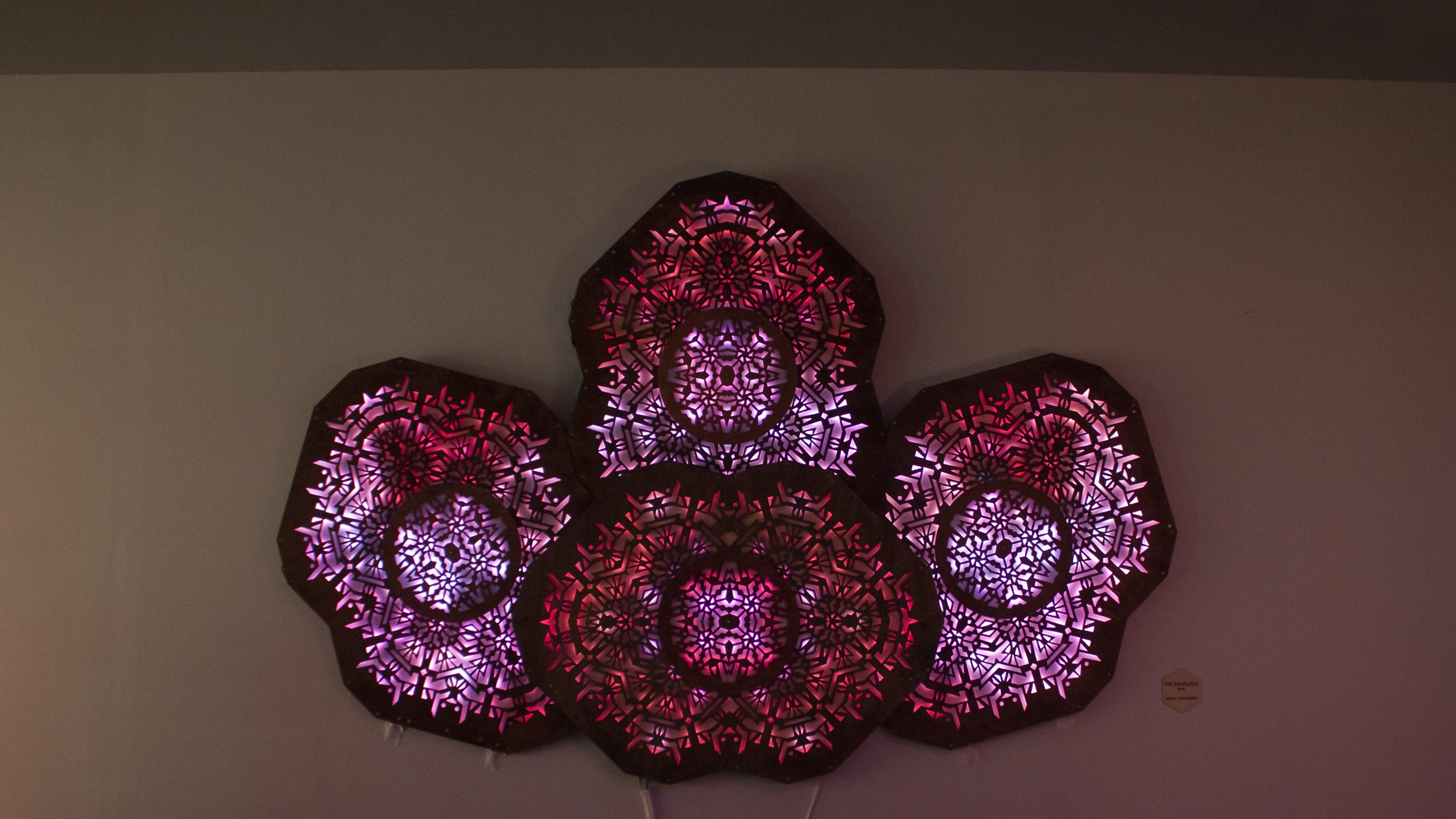Ether quills
Two Quills combined with The Undergrowth, Entheos Gathering, 2023 Helsinki
The Ether Quills are six peacock feathers in the form of yellow and purple LED panels.
My technique keeps advancing. Now, all the bolts and spacers holding everything together have been standardized and tweaked far better than in the first iterations. Instead of trying to hide the bolts by coloring them or sinking them into the pieces, the bolts have been brought forth, where they glisten at the viewer up front and center.
In the dark of the night, the round chromed heads of the bolts shine like lights of their own.
Also, the controller scheme has been revamped. The panels are now fed a special 3-pin wire that provides the panels with 12v and data from the controller. Everything in the new panels is now wired to minimize any latency and dropped frames for dealing with large festival stages.
Two Quills at my workshop
Quills combined with other stage parts I’ve designed, the Zxyplt’s head and shoulders. More about Zxyplt’s background can be found at KIVA’s website.
Aamu UG 10v Anniversary party main stage, October 2023, Aitoon Honkala








